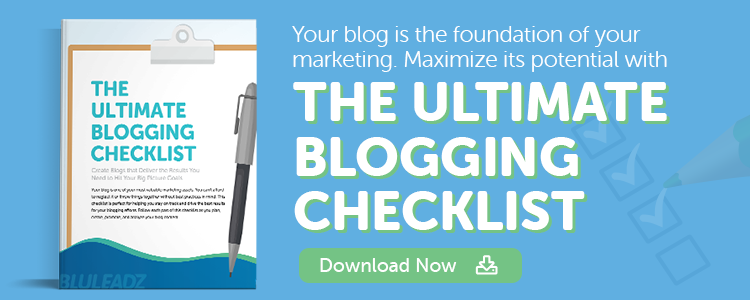Your brand, each member of your team, and each one of your offerings can all have a story.
In the digital era, choosing which of those stories to tell has become more important than ever. A website isn’t simply a product catalog: It’s a way of shaping prospects’ understanding of what you can do for them. With that in mind, digital storytelling is essential to defining your value.
Digital storytelling refers to the art of using online multimedia and design elements to provide a complete and cohesive narrative. Digital storytelling is used in all kinds of contexts, for fiction and nonfiction running the gamut from bedtime stories to instruction manuals.

Successful marketers are great digital storytellers in a variety of ways:
- They recognize the unique power of digital media and its unusual opportunities.
- They understand time and attention are at a premium and make good use of both.
- They adapt to non-linear storytelling because each viewer experience is unique.
- They provide multiple “pay-offs” to improve viewer engagement and investment.
To achieve the best digital storytelling, people, priorities, and technologies need to be aligned. A well-written blog post, an infographic, or even a viral video each serve as just one part of the story to be experienced within a greater whole.
The bigger that whole is, the more complexity is involved in telling a terrific story.
A digital story combines medium and message in a unique way, so it’s not the same as telling a story to your friends or around the campfire. When you’re familiar with the obstacles to digital storytelling, however, you can adapt any material to the online world.
Here are the three biggest obstacles to digital storytelling:
1. Data and Information Need to Be Shared Across the Organization
We often think of a story as a single experience that has a beginning, a middle, and an end. In digital storytelling, however, each story is made up of many smaller ones that all come together.
Think of a case study, for example. A case study can be looked at as the story of how a business challenge was overcome. To get there, though, it has to tell many different, interrelated tales:
- The story of the client’s team, their decision-making process, and what’s at stake.
- The story of the problem to be solved and why it affects the client the way it does.
- The story of the vendor’s solution and the process they undertook after selection.
- The “happy ending” story of how the issue was resolved and why the outcome rocks.
Each individual piece of this puzzle requires data from certain stakeholders inside and outside of the organization. Without it, you simply won’t be able to tell a complete story, and a story that’s missing the juicy details is almost as bad as one that ends in the middle!

A digital story is often ongoing and may not have a clear “end point,” but you can always make your storytelling stronger by fostering collaboration. Diverse voices and diverse data make the “moral” of your story much easier to grasp.
2. Narrative Structure and Voice Must Remain Consistent Across Platforms
Before digital storytelling can be done strategically, teams should get together to determine just how the brand voice should sound. Every piece of content you publish should address your audience in the way they expect, from format to formality to jargon and beyond.
This is especially vital in today’s social media-driven digital landscape.
Each one of your social media accounts is presumed to “speak” for your brand. Many of your leads and customers will follow you on just one platform, and they expect that whatever they see from your brand account will be relevant, useful, and trustworthy.
How can you make sure your digital stories aren’t fragmented or repetitive?
These methods are crucial:
- Align your social media, blogging, and video into a single content marketing strategy.
- Develop a style guide that allows each team member to stay focused on your message.
- Curate your best content internally so new hires can see the hallmarks of your brand.
- Put the core themes of each marketing campaign and your overall brand in writing.
While you may adjust stylistic elements between stories to account for different buyer types, remember that the storyteller is always the same: Your company. The more reliable you are in producing credible, high-quality content, the more people will trust you.
3. Delivery of Your Digital Storytelling Must Be Optimized
A story isn’t really a story if nobody knows it’s there!
In the digital sphere, the delivery of a story is inseparable from its content. People really do judge a book by its cover (or by its Amazon sales page). The way digital stories are packaged and presented determines if they live or die as much as that cover helps determine book sales.
Elements of a story that were once considered “mere” technology now help drive the narrative itself. Luckily, we data-focused scientific marketers don’t need to search around in the dark when it comes to formulating our stories in a way that’s friendly to our audience.
Each interaction with your prospects and leads will tell you a little bit more about the content, formats, styles, timing, tactics, and presentation methods that work.
So, how can you optimize your online storytelling?
- Organize social media and blog posting to coincide with high-engagement hours.
- Incorporate visual storytelling methods to maximize user attention and retention.
- Use design best practices to make content mobile-friendly and handicap-accessible.
- Provide content in a range of formats to cater to the many ways that people learn.
Your website users are your best resource when it comes to determining optimization priorities and ensuring your efforts produce real value. It’s critical to have an analytics platform active on your site: Ideally, the same software will monitor your social performance, too.

You can get remarkable insights about your audience from this behavioral data.
But ... you should also remember never to overlook the power of asking.
Many digital-focused brands are tempted to fall into an adversarial relationship with their leads, cooking up their campaigns based on derived data almost as if they’re sneaking around.
But remember: Inbound marketing centers around the relationship you create with your leads, and you do that best when you’re able to start a two-way conversation with them.
Build feedback collection mechanisms into every marketing process and every story. Mix things up with a variety of approaches, from traditional contact forms to AI-driven chat, so you’ll cut through the clutter and get individual perspectives from real people, not just “personas.”
Digital storytelling is one dynamic aspect of crystallizing the experience you promise to each and every one of your customers. Storytelling helps us make sense of the world and our place in it: By telling and hearing stories, we distill perspectives into decisions.
As a B2B brand, your ability to help others make decisions is the key reason why they invite you into their lives. By following these digital storytelling tips, you’ll be able to craft more sophisticated online narratives, and that will put the true value of your advice into focus.


Rob Steffens
I am the Director of Marketing here at Bluleadz. I'm a huge baseball fan (Go Yankees!). I love spending time with friends and getting some exercise on the Racquetball court.